If a latte, macchiato, or cappuccino is your go-to drink, it requires more than the perfect espresso shot. To replicate the coffee your local barista makes, you must first learn the difference between steamed milk vs frothed milk.
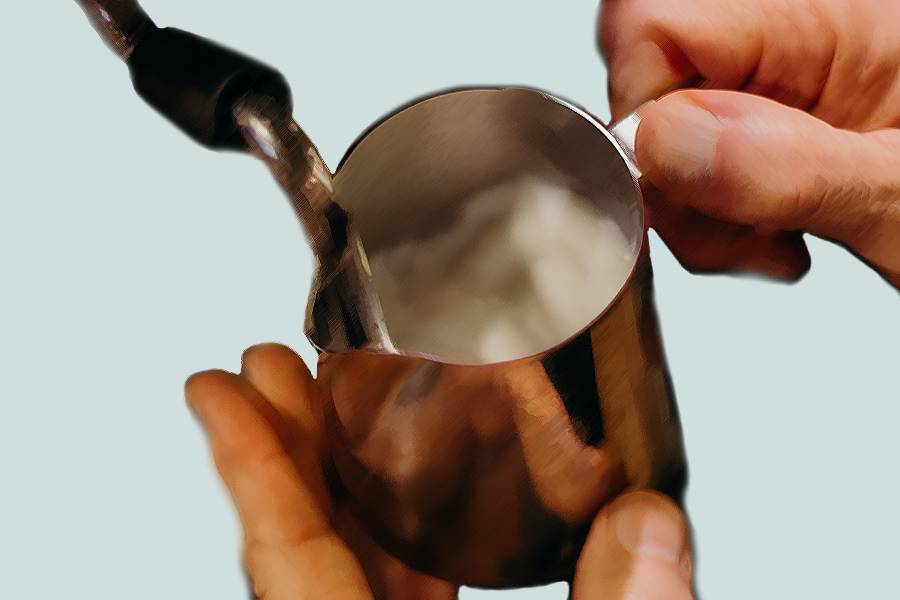
Topics Explored
- What is Steamed Milk?
- What is Frothed Milk?
- Differences Between Steamed Milk & Frothed Milk
- How to Make Steamed Milk?
- How to Make Frothed Milk?
- More Questions
Whatever the reason you’re trying to recreate your favorite coffee at home may be, it can get more complicated than you think. Steaming milk is the foundation of many beverages you’re accustomed to seeing at the coffee shop.
Without understanding the basics of steamed milk vs frothed milk, you won’t be able to achieve cafe-quality brews.
What is Steamed Milk?
Steamed milk is the product of heating milk with the steaming wand a coffee machine has. It’s less bubbly but more creamy, smooth, and even silky.
It’s often referred to as microfoam because of the tiny bubbles created when aerating the milk. The foam is reflective, heavier, and ideal for latte art.
Steamed milk was invented in 1938 with the modernization of the espresso machine. It’s mostly used in lattes, mocha, and hot chocolate.
The foam is always hot since the steaming wand comes in direct contact with the milk. The pressurized steam heats the lactic sugar, breaks down the fats, and retains the milk’s consistency(1).

What is Frothed Milk?
Frothed milk is easier to make, requires less equipment, and produces more bubbly, airy foam that you can use for hot or cold drinks.
One of the most famous drinks with frothed milk is a cappuccino. You can make frothed milk with any jar you can seal and shake, a handheld or stovetop frother.
Frothed milk dates back to the 1900s; it got popularised simultaneously with the invention of the cappuccino.
The foam produced by frothing the milk is fluffy and thick. If you prefer hot foam, you need to heat the milk in advance since frothers don’t use heat.
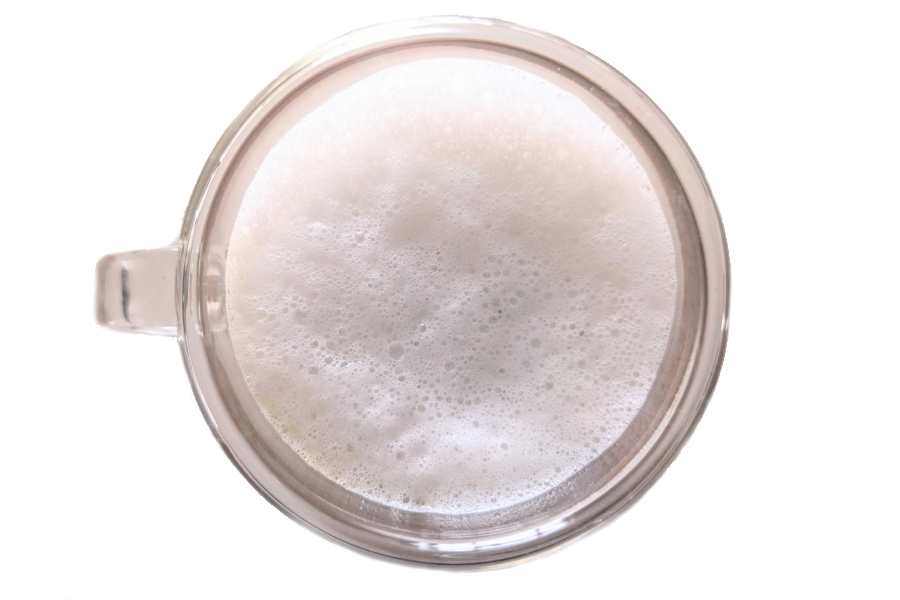
Differences Between Steamed Milk vs Frothed Milk
Not everyone likes the same type of milk foam, and not every coffee drink requires the same method. While both enhance the flavor and appearance of coffee, there are a couple of crucial differences.
If you can’t guess them at first glance, here’s a comparison of steamed milk vs frothed milk.
| Steamed Milk | Frothed Milk |
|---|---|
| Technique: – Start with 2/3 cold milk – Steam wand placed 1/2 inch beneath surface – Wand is submerged to stop aeration |
Technique: – Start with 1/3 cold milk – Steam wand placed 1/2 inch beneath surface – More air is introduced before wand is submerged |
| Looks glossy with very small foam bubbles | Thicker head of foam and more voluminous |
| Viscous and silky texture | Texture is more airy and ‘dry’ |
| Taste: – Sweeter than milk – Very slight hint of caramel |
Taste: – Hint of sweetness – Less milk flavor but more whipped |
| Used in lattes & café au lait | Used in cappuccinos |
Technique
The technique of steaming and frothing is vastly different. Steaming requires keeping the steaming wand closer to the surface in the beginning and deeper or submerging it to stop aeration.
When frothing, you need to keep the wand’s tip closer to the surface for longer and then dip it to stop the aeration.
Appearance
Steamed milk is essentially heated milk with a thin layer of foam that doesn’t form any peaks. The foam is glossy, creamy with tiny bubbles. It’s commonly used for latte art.
On the other hand, frothed milk has a thick layer of foam that stays raised once placed over the coffee.

Texture
It’s surprising how the different technique gives an entirely different texture to the same milk. Steamed milk has a silky consistency due to the deeper aeration and forms a microfoam on the surface (see photo above).
Frothed milk has more air incorporated into it, giving it an airy and light texture.
Taste
The taste depends on the type of milk used, whether full fat, 2%, or skim (fact: whole milk is tastes the best!). The flavor develops with the heating of the sugars in the milk and the breakdown of the fats.
Both taste the same, but you can sense a minor hint of more sweetness and creaminess in the steamed milk since there’s less air incorporated in it, and the flavors are less diluted.
Application

Steamed milk is used in lattes and cafe au lait. You can probably recognize the process and use from the many latte art videos circulating over the internet.
Frothed milk is famous for the use in cappuccino and the characteristic peak sticking out of the cup.
How to Make Steamed Milk?
Instructions
Steaming milk might seem like an easy process, but if you’re at the home barista, you need to follow some steps to end up with the perfect microfoam. All you need is milk, a pressured steam wand, and a pitcher.
Time Required: 6 minutes
Start with cold milk
Use cold milk since it will get heated during the steaming process. Fill the pitcher up to two-thirds (this leaves room for milk expansion and the whirlpool that happens when the pressurized steam gets in contact with the milk).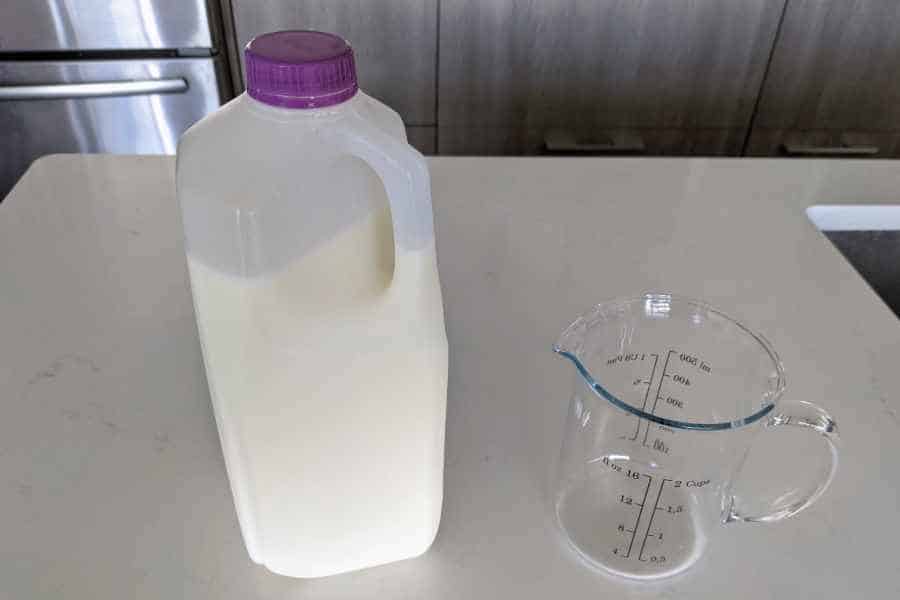
Purge steam wand
Open the steam valve to release any water that might have collected in it before dipping it into the milk.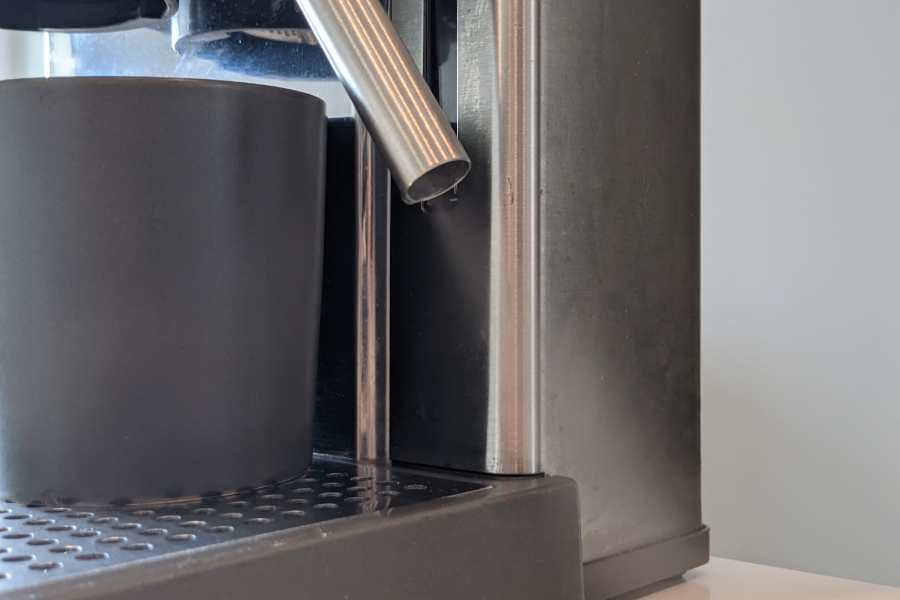
Start steaming
Once the wand’s purged, place it just beneath the milk’s surface (or about 1/2 inch). Lean the wand against the pitcher’s spout and start the steam again. You should hear a smooth ‘whirring’ sound and see a milk vortex form in the center. 
Watch the temperature
The milk is just about done when the temperature of the milk is between 140°F and 150°F. It should never exceed 160°F. If you don’t have a thermometer, touch the pitcher to gauge the temperature. If you can no longer hold it comfortably, it’s ready.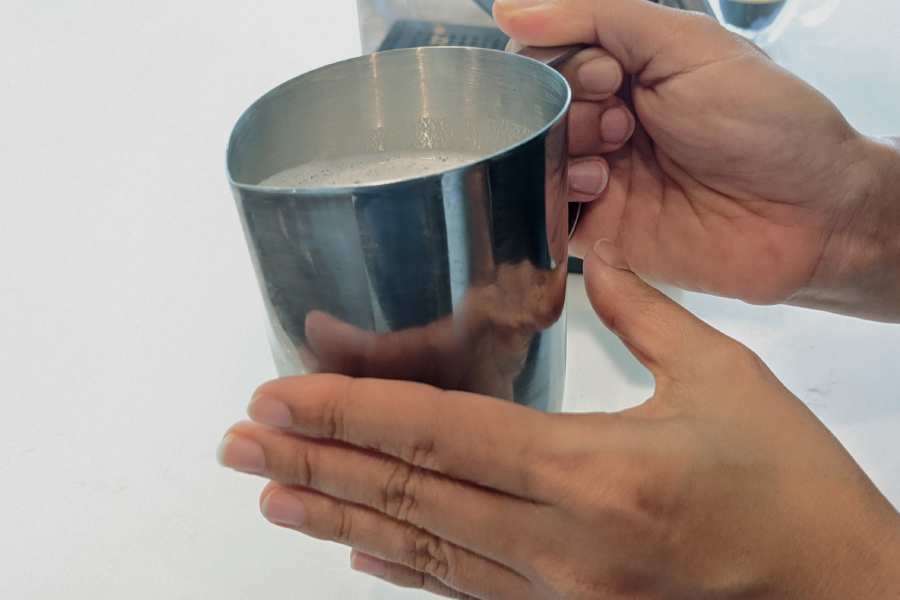
Stop aerating
Submerge the wand to stop the aeration process (most steam wands have a small opening that sucks in air). Turn off the steam valve and remove the wand.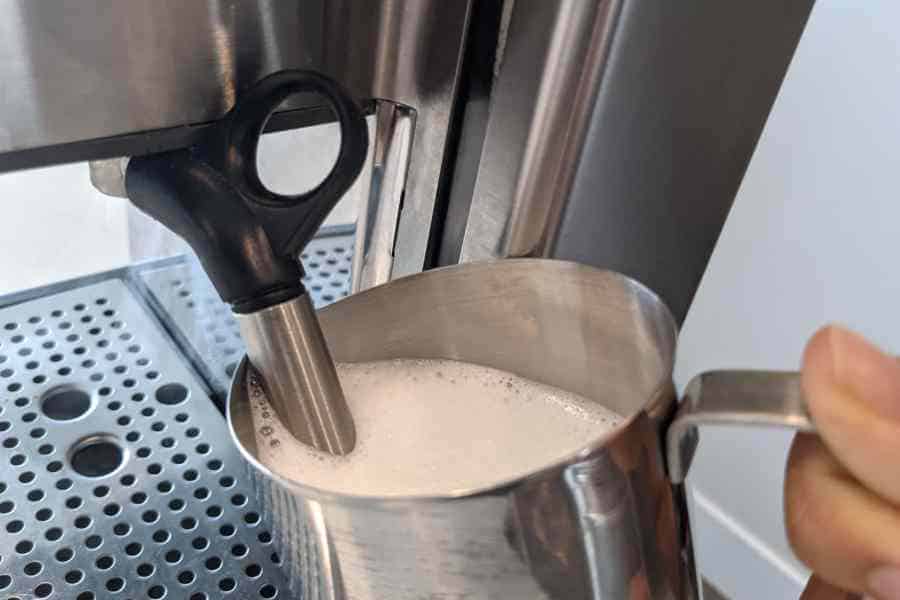
Pour over beverage
Once your steamed milk is done, gently pour it over the previously brewed espresso. Don’t forget to clean and purge the wand afterwards to prevent any milk buildup and keep it working correctly.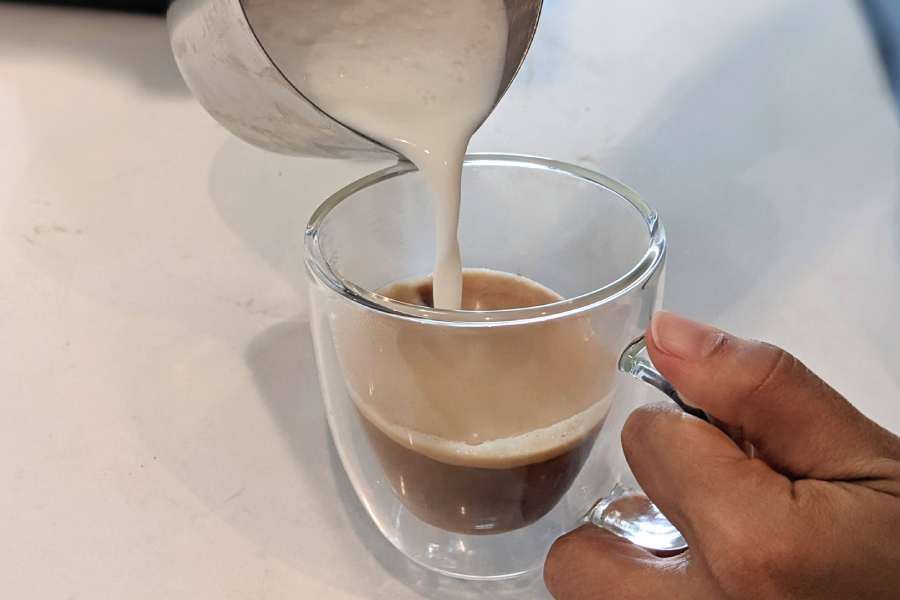
How to Make Frothed Milk?
Perfectly frothed milk is the key to an excellent cappuccino, and if this is your drink of choice, here are the steps you need to follow. For this method, you’ll also need milk, a pitcher, and a steaming wand.

Instructions
Time Required: 7 minutes.
-
Use milk out of the fridge
Start by picking the type of milk you’ll use. Whole milk works best for frothing but you can also use 2% milk. As always, the milk should be cold.
-
Fill pitcher one-third full
Unlike steaming, fill your pitcher only one-third of the way with milk. During the frothing process, milk grows in volume more than by steaming, so it requires more room.
-
Prep steam wand
Just like steaming, purge the steam wand to get rid of leftover water and milk. Place the wand about 1/2 an inch under the milk’s surface.
-
Turn on steamer
Position your wand against the spout and begin frothing. Listen closely to the sound it makes. If you hear sharp screeching, move the wand a bit closer to the surface.
-
Incorporate air
You’ll be frothing the milk longer (than steaming) to incorporate more air so keep an eye out for milk expansion during this process! Move the pitcher up if the milk is expanding too quickly.
- Take the temperature
The same temperature range applies as with steamed milk, don’t let it pass 160°F. Use a thermometer or touch the sides of the pitcher. When it starts to get hot to the touch, the frothed milk is ready.
-
Knock out some air
Once the frothing is done, give the frothing pitcher a few taps against the countertop to get rid of large air bubbles. You’ll be left with a thick layer of airy foam.
-
Pour into beverage
Pour frothed milk to a single or a double shot of espresso. With frothing, the milk is more whipped which is not the case with steaming. Sit back and enjoy your beverage!
Summary
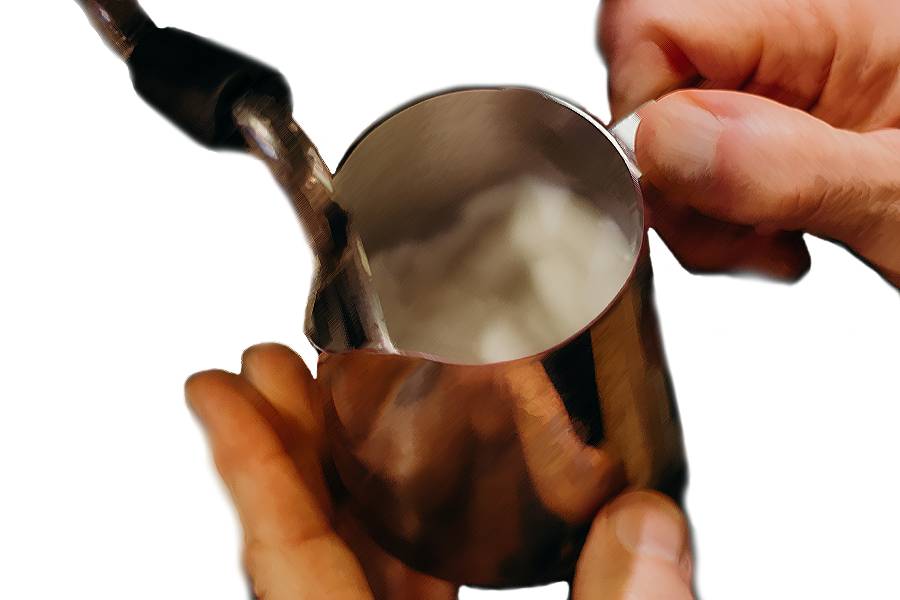
Understanding the differences between steamed milk vs frothed milk doesn’t have to be intimidating. Frothed milk essentially has more volume, airy foam and can be used for hot or cold coffee drinks. Steamed milk has a silky, thin microfoam and is the best for lattes.
To pick your method, decide what milk state you want for your coffee.
More Questions
How to foam milk without a frother?
You can froth milk even without a steam wand or frother. You can use a french press, an immersion blender, or just a mason jar with a lid. For the most basic method, fill your jar with one-third of the milk and shake vigorously for 30 to 60 seconds. Once the milk has doubled in volume, you’re done!
Is latte milk steamed or frothed?
The milk used in lattes is steamed with a thin layer of foam. Typically, the latte is made with a single or double shot of espresso and delicately aerated milk, producing small amounts of microfoam. This type of milk gives a creamier texture and sweetness to the latte.
Wondering where your info comes from? We totally understand. Hey Joe only obtains our information from reputable sources. Contents from this article are sourced from the following publications:

